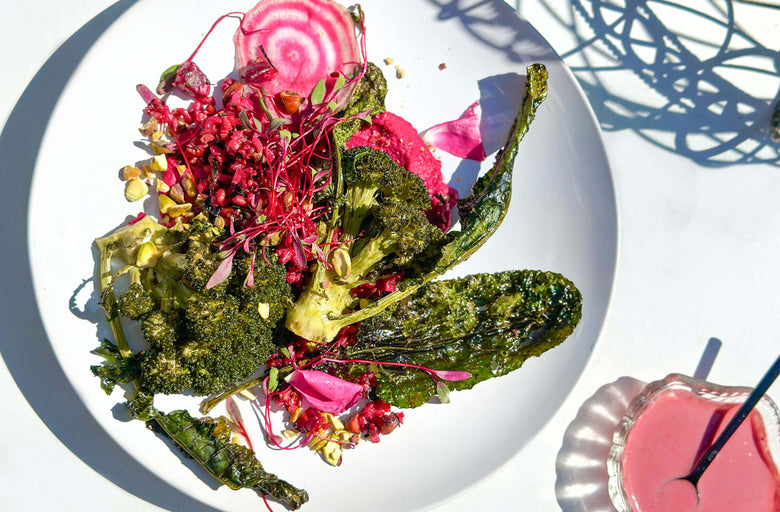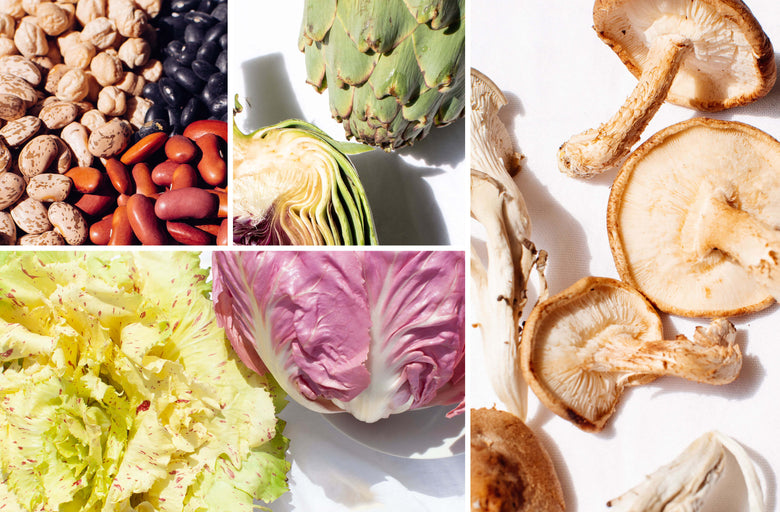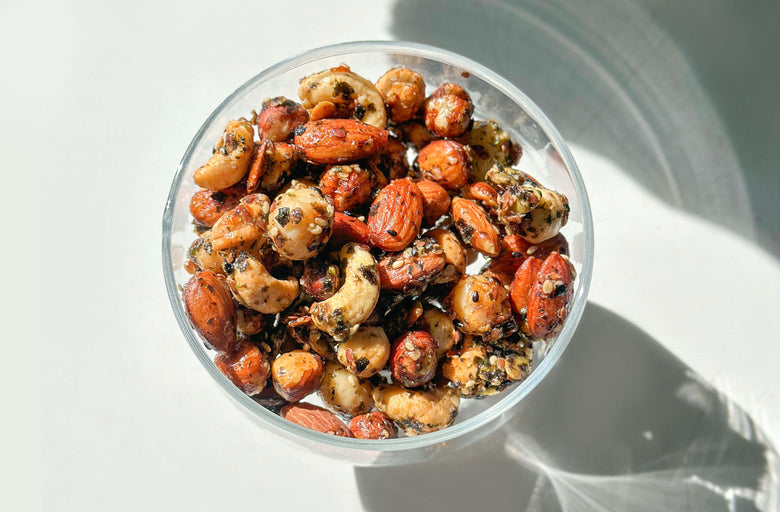Think of food as information. Every piece of food you consume is broken down into nutrients that tell your body what to do and how to feel. A nutrient's ability to be absorbed and used by the body is its bioavailability—and it's ultimately the secret to glowing skin, smooth digestion, and increased energy.
Bioavailability And Its Barriers
In nutrition, there are three macronutrients—protein, fat, and carbohydrates—and then there are micronutrients, essential elements like vitamins and minerals that complete the picture of true health. While the bioavailability of macronutrients is estimated to be more than 90%, bioavailability of micronutrients depends on a number of factors, both internal and external. Being aware of them helps ensure you get the full spectrum of benefits from your healthy habits.
A nutrient’s ability to be absorbed and used by the body is its bioavailability—the secret to glowing skin, smooth digestion, and increased energy.
Internally, your own body can either help or hinder bioavailability. Certain health conditions, like Crohn's disease, cystic fibrosis, celiac disease, and dairy intolerance, can make it difficult for your body to effectively absorb nutrients. Aging causes a natural decline in stomach acid, which the body needs to break down and absorb proteins and micronutrients. This means that as you age, you may run the risk of nutrient deficiency. You can buffer against this by taking minerals like calcium and magnesium in their chelated forms, which means they’ve gone through a process that bonds them with amino acids, making them more easily absorbed and metabolized with less stomach acid required.
In some respects, bioavailability is linked to your own DNA. Approximately 60% of Americans have a mutation of the MTHFR gene that prevents their bodies from producing methylfolate, necessary for the process of methylation, which factors into everything from gene expression to fat metabolism to cell regeneration to detoxification. Loading up on B vitamins—whether through diet, supplementation, or both—can help, but there’s a catch: if you have the MTHFR gene mutation, your B vitamins must be in their most active forms, otherwise your body won’t be able to absorb them. To ensure the B vitamins you’re taking have the chance to work, make sure they’re methylated.
Externally, the chemical makeup of different nutrients affects their bioavailability. Take iron, necessary for red blood cell production. There are two types of iron: “heme iron,” which comes from animal-based foods, and “non-heme iron,” which comes from plants. While heme iron is generally considered more bioavailable than non-heme iron, you can get your iron from plants by choosing foods like nuts, beans, and fortified grain products, which are naturally more bioavailable than other plant-based foods and will be better absorbed into your body.
Just like you can expect a reaction when mixing baking soda and vinegar, there are some foods that cancel each other’s nutrient bioavailability out. In particular, antioxidants such as phytic acid (a natural substance found in plant seeds), and polyphenol (specific compounds in plants) can bind with minerals like zinc, calcium, or iron, preventing their absorption.
Five Ways to Boost Bioavailability
1 - Choose real, whole foods. Your body is smart, but it requires quality information to function optimally. Real, whole foods equate to information your body recognizes and knows what to do with, which is why doctors and nutrition experts advise getting your nutrition from a diet of unprocessed, whole foods like fruits, vegetables, nuts, seeds, and grains. The same rules apply in the case of supplements. Just like you’re better off eating a roasted potato than a potato chip, your body is better at recognizing and using, say, vitamin C sourced from a piece of fruit than vitamin C made in a lab. So the ingredients in your supplements are as important as the ones on your plate. To get the most bang for your buck—and avoid quite literally flushing your supplement dollars down the drain—look for vitamins and minerals sourced from whole foods.
2 - Turn to well-known combinations. Our bodies love certain ingredient combinations as much as our taste buds. When cooking with turmeric, add a few pinches of black pepper to increase the potency of curcumin (the active compound in turmeric). Foods that contain the fat-soluble vitamins A, K, E, and D (think sweet potato, mushrooms, spinach, broccoli…) are best served with a healthy fat like cold-pressed olive oil or a sprinkle of seeds to increase their absorption. Pair iron-rich leafy greens like Swiss chard or collards with a squeeze of citrus to boost mineral absorption. Whether through your diet or supplement regimen, make sure you’re balancing both vitamin D and calcium—the former boosts absorption of the latter.
3 - Rely on fresh, local produce. Did you know that your produce loses up to 30% of its nutrients within three days of being harvested? Make sure your fruits and vegetables are as nutrient dense as possible by visiting local farmers markets, or eating them as soon after purchasing as possible. If buying frozen, look for flash-frozen organic options.
4 - Wash and soak your grains. Phytic acid, which prevents nutrient absorption, is water-soluble, so a quick bath takes care of it. Remove it from your grains by washing and soaking them before cooking.
5 - Know when to cook and when to eat raw. In some cases you’ll get more of the nutrient a food is known for depending on whether you eat it cooked or raw. To reap the full benefits of the beta-carotene in orange foods like carrots and squash, give them a nice roast. For the most potent hit of vitamin C from foods like tomatoes, enjoy them raw. Of course, when it comes to plant foods, more is more—focus on getting plenty of fruits and vegetables, without getting too caught up in how you prepare them.
Eating a balanced, plant-rich diet and supplementing thoughtfully will certainly help you meet your health goals, but if you’re looking to get even more from your diet (who doesn’t want radiant, glowing skin; increased energy; or mental clarity?) learning how to unlock bioavailability is a quick step to getting there.
Transforming the Body Through Plant Nutrition
Plants Provide Everything the Body Needs






